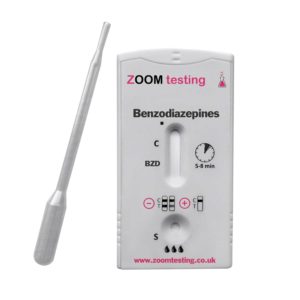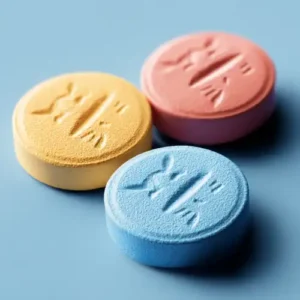Benzodiazepines, originally made available to the public in 1960 by Hoffman-Laroche, are a class of psychoactive drug used to treat a range of conditions, including insomnia, seizures, muscle spasms, alcohol withdrawal, and anxiety. In 1977, benzodiazepines were the most prescribed medication globally.
Benzodiazepines, commonly known as minor tranquilisers, are a relaxant and depressants, typically used for their sedative properties. Doctors will often prescribe a combination of benzodiazepines and opioids to people who suffer from chronic pain. Unfortunately, benzodiazepines have an extremely high rate of abuse; however, we now have ways of testing for the use of benzodiazepines.
How Benzodiazepine Testing Works
When a benzodiazepine drug has been consumed and metabolised by the body, it breaks down into various chemical components known as metabolites. So, in addition to the drug consumed, certain drug tests are looking for the presence of metabolites. This is because benzodiazepines thoroughly metabolise within the body, and the drug consumed (parent drug) is not detectable in urine. However, testing can still confirm when a metabolite is present, which enables the test to determine what drug was consumed.
The exact amount of time taken for a medication or its metabolite to appear in urine varies. Some substances will appear in just a few minutes and last for days. As an example, the metabolites of Valium (diazepam) will appear in urine 30 minutes after consumption.
Testing for benzodiazepines falls into three categories – short-acting, immediate acting, and long-acting benzodiazepines – with each category working in a different way. Benzodiazepines will stay detectable in a normal person’s urine for between 2 and 10 days, depending on the classification.
The Different Types of Benzodiazepines
While all benzodiazepines work similarly, there are some key differences in how long their effects last and how they are metabolised by the body. This impacts both their therapeutic uses as well as how long they can be detected on a drug test.
Short-Acting Benzodiazepines
These have a relatively brief duration of effects, typically lasting 3-6 hours. They tend to metabolize faster, only being detectable in urine for 1-2 days after use. Common short-acting benzos include:
- Midazolam (Versed) – Used for sedation and anxiety before medical procedures. Known for its amnesia-inducing properties.
- Triazolam (Halcion) – A powerful sleep medication. Quickly leaves the system but has a risk of next-day grogginess.
- Alprazolam (Xanax) – Prescribed for anxiety and panic disorders. Highly addictive if misused.
Intermediate-Acting Benzodiazepines
As the name suggests, these last longer than the short-acting types but not as long as long-acting benzos. They may show up on a drug test for 2-4 days after use. Examples include:
- Lorazepam (Ativan) – Used for anxiety, insomnia, and alcohol withdrawal symptoms. Effects can last 12-24 hours.
- Clonazepam (Klonopin) – Also prescribed for seizures, panic attacks, and anxiety. Stays active in the body for 1-2 days.
- Temazepam (Restoril) – A hypnotic sedative commonly used as a sleep aid. Detectable for around 3 days.
Long-Acting Benzodiazepines
These benzodiazepines have a prolonged half-life, meaning they take longer to metabolize out of your system. Drug tests may pick them up for 5-10 days after the last dose. Long-acting benzos comprise:
- Diazepam (Valium) – One of the most widely prescribed benzos for anxiety, muscle spasms, and alcohol withdrawal. Can linger in your system for weeks.
- Chlordiazepoxide (Librium) – Also used for alcohol withdrawal as well as anxiety and insomnia. May be detectable for over a week.
- Flurazepam (Dalmane) – A potent sleep medication with effects that can last over 24 hours. Slowly eliminated from the body over several days.
While short-acting benzos clear the system fastest, they also have higher risks of dependence, withdrawal, and amnesia/blackouts when misused. The long-acting varieties are better for managing chronic conditions but take longer to leave the body.
Of course, no matter which type of benzodiazepine is involved, many people still try to find ways to beat the drug tests designed to detect them.
Can People Cheat the Testing System for Benzodiazepines?
Yes they can – there are a number of ways people try to cheat on their urine drug screening test.
Companies are always in the pursuit of improving workplace safety and productivity, but there are employees who put companies and other employees at risk by cheating on their drug testing. Some of the ways employees try to cheat drug tests include –
- Diluting Their Urine Sample – they do this by either drinking huge amounts of water before the test or by directly adding water to their sample. Either way, there is a chance the employee will get a negative result
- Using Someone Else’s Urine – some cheats use synthetic urine, liquid urine, or someone else’s urine. Others have been known to use animal urine! You can even purchase powdered urine pockets online which are simply mixed with water.
- Adding Chemicals to Their Sample – some people have been known to hide the presence of drugs in their system by adding chemicals, like salt, bleach, soap, eye drops, and peroxide, to their urine. These specimens are called ‘adulterated’ specimens. These specimens will typically be labelled as invalid, but unfortunately, not all chemicals (isopropanol, Visine eyedrops, and others) can be detected.
- Delaying Their Drug Test – this is a very common evasive method of cheating a drug test. These people simply wait until the drugs have been flushed out of their system.
- Trying to Detox Their System – others try to detox their body from drug use by consuming fibre-rich foods, eating herbs like burdock and red clover, and drinking diuretic beverages or herbal teas to flush the toxins from their body.
Some of these methods may render results unusable (designed to get an alternate date for testing) or help a person achieve a false negative for the drug test. Unfortunately, there’s an entire online industry dedicated solely to helping people pass their drug screening test.

How to Avoid Altered Drug Testing Results
Random drug testing is possibly the best way of avoiding drug testing cheats. Alternatively, make-up urine drug tests should be scheduled sooner rather than later – certainly less than 10 days from the first test.
How To Conduct A Urine Drug Screening Test
Urine drug testing is very simple. Before you start, make sure you have plenty of urine drug test cups. Note: Zoom Testing can also supply single drug tests for benzodiazepines if you are only interested in screening for one drug, otherwise the multi-panel or cup test is the way to go.
The person being tested should leave all belongings, including contents from their pockets, in a room separate to the one where drug testing is taking place.
Hand the test recipient a cup, then go with that person to the bathroom to make sure that no adulterants are added to their sample. While the person must be given as much privacy as possible, it’s also important that you explain why you’re accompanying them to the bathroom. Once the person has urinated into the cup, the person should affix the lid then hand the cup to you. Now you can test the urine sample for the presence of benzodiazepines or other drugs.
Photo: “UK Drug Testing Laboratory” by Anthony Cunningham for Zoom Testing
Zoom Testing is a leading UK drug testing company and a supplier of Drug Test Kits.





